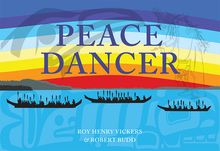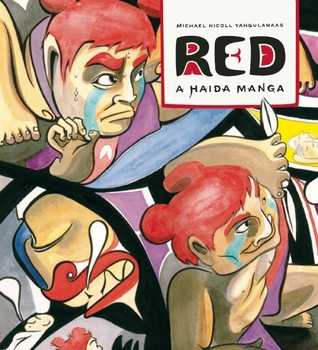Teachers are always looking for books to pair with required units of study. Most students in the 3rd or 4th grade study the indigenous cultures of their region. Quality picture books by indigenous creators are few and far between so I was thrilled to find Peace Dancer and Orca Chief by Roy Henry Vickers and Robert Budd.

Both books are traditional stories from the village of Kitkatla in British Columbia. This is the home town of the authors. Roy Henry Vickers is an artist and writer and Robert Budd is a historian. Roy holds a leadership position within his tribe. They belong to the Gitxaala Nation which is part of the larger language group known as the Tsimshian. Kitkatla is on the coast of British Columbia just east of the Islands of Haida Gwaii.
Peace Dancer is a traditional tale about the fate that befalls the people when children fail to respect a crow. It’s a flood narrative, which is interesting because so many ancient cultures have some kind of flood story. It gives the explanation for why a peace dancer is so important in a potlatch ceremony. In the author note, Roy Henry Vickers explains that he is the peace dancer for his community.
 Orca Chief is also a story about the importance of respect for the natural world. In this story a group of disrespectful fishermen are taken under the sea to visit the Chief of the Orcas. After the fishermen apologize the Orca Chief forgives them and shows them ways to find many good things to eat–herrings, oolichan, and crabs.
Orca Chief is also a story about the importance of respect for the natural world. In this story a group of disrespectful fishermen are taken under the sea to visit the Chief of the Orcas. After the fishermen apologize the Orca Chief forgives them and shows them ways to find many good things to eat–herrings, oolichan, and crabs.
Both books have stunning illustrations, combining a mainstream modern painting style with traditional formline art to represent the fish, birds and animals. They are vividly colored and brilliantly produced on the highest quality paper. If Vickers and Budd were Americans and therefore eligible, they would be contenders for the Caldecott with each of these books.
This week is small press week and it’s worth noting that these books are published by Harbour Publishing, a small independent publisher in British Columbia. They have been publishing the work of Vickers and Budd for many years. The pair has a new board book out this year called Hello Humpback.
When you are looking for diverse titles–especially by indigenous writers and artists–don’t forget the small presses.

 One of the things I love about PNBA is the opportunity to meet small press publishers and see work by emerging artists and and Indigenous story tellers. By far the most distinctive work I saw this year was a graphic novel called Red: a Haida Manga by Michael Nicoll Yahgulanaas. He is a visual artist and storyteller from Haida Gwaii (formerly the Queen Charlotte Islands)
One of the things I love about PNBA is the opportunity to meet small press publishers and see work by emerging artists and and Indigenous story tellers. By far the most distinctive work I saw this year was a graphic novel called Red: a Haida Manga by Michael Nicoll Yahgulanaas. He is a visual artist and storyteller from Haida Gwaii (formerly the Queen Charlotte Islands)